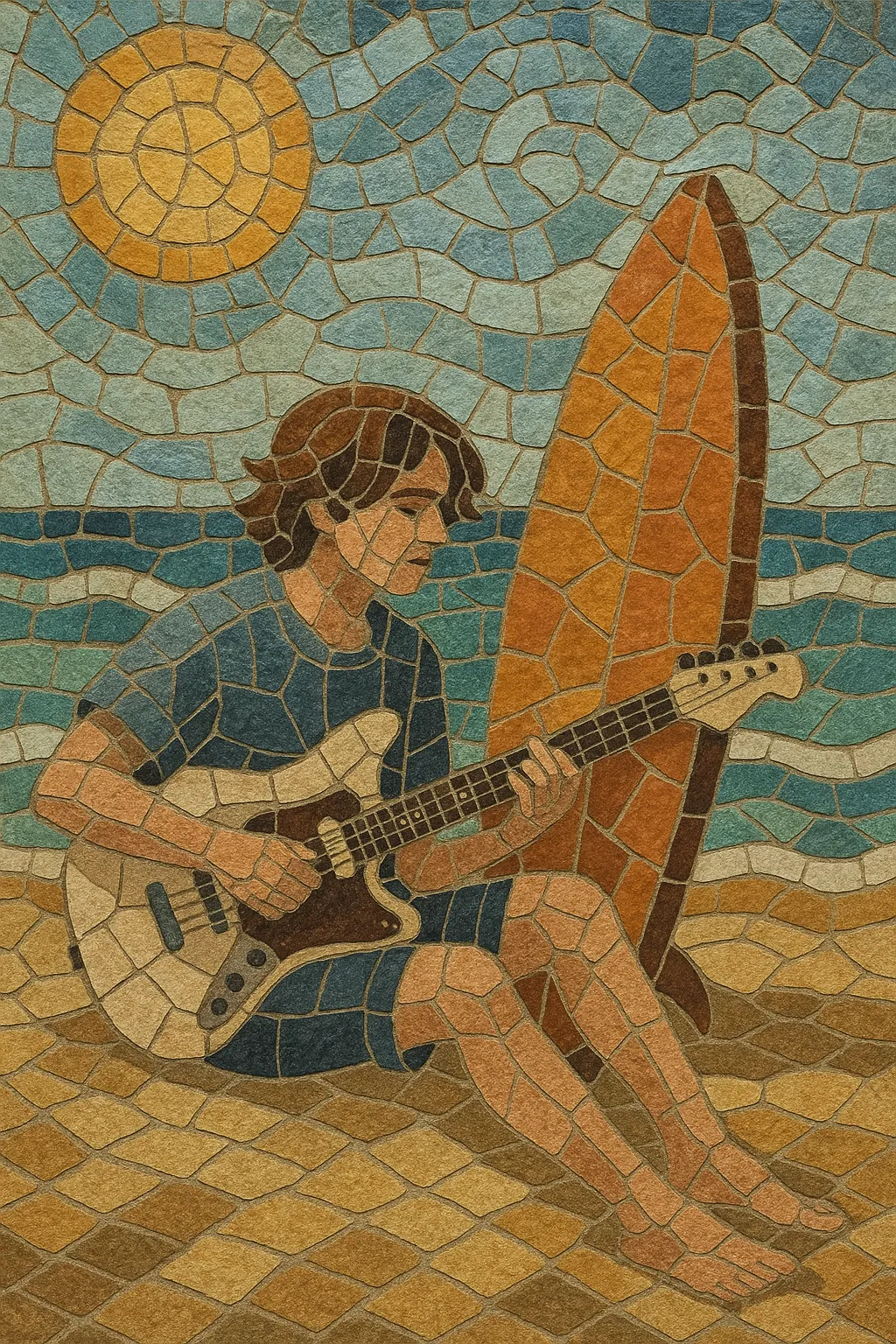
Indie surf is a modern indie rock offshoot that borrows the twangy, reverb‑drenched guitars and beachy imagery of 1960s surf rock, then filters them through lo‑fi, DIY production and indie pop songwriting.
It favors bright, chiming guitar tones (often Jazzmasters/Jaguars through spring reverb), simple, catchy melodies, and compact song forms. Vocals tend to be airy and drenched in space, with lyrics about youth, romance, coastal life, and bittersweet nostalgia.
The sound emerged in the late 2000s blog era and crystallized in the early 2010s, especially around West Coast U.S. and Brooklyn scenes, intersecting with garage revival, dream pop, and slacker aesthetics.
Indie surf traces its sonic DNA to the twang, tremolo picking, and cavernous spring reverb of 1960s surf rock. Acts like The Ventures and Dick Dale established the instrumental vocabulary—wet guitar tones, rolling toms, and bright leads—that later indie musicians would adopt and soften with pop sensibility.
While surf references popped up in alternative and garage revivals of the 1990s, the late 2000s blog era provided the catalytic environment. Affordable home recording and online discovery enabled young bands to blend surf’s sparkle with lo‑fi indie pop charm, creating a warmer, song‑centric variant rather than strictly instrumental surf.
From roughly 2009 to 2012, a cluster of U.S. bands popularized the style. California and Florida groups channeled sunshine, skate, and beach culture, while New York/New Jersey outfits brought a hazy, melancholic tint. The formula—jangly, reverb‑rich guitars; concise, hooky writing; and wistful, youthful lyrics—became a recognizable scene aesthetic.
As the 2010s progressed, indie surf splintered into adjacent flavors: surf‑noir with spooky tremolo and minor‑key motifs, garage‑psych with dustier production, and dreamier, chorus‑washed takes that overlapped with shoegaze and dream pop. The core traits—wet guitars, buoyant rhythms, and nostalgic mood—remained consistent even as production grew cleaner.
The sound persists in DIY and indie circles, influencing bedroom‑recorded guitar pop and shaping a palette—spring reverb, jangly rhythm guitars, compact hooks—that artists use to evoke coastal atmosphere and nostalgic sentiment in contemporary indie.

